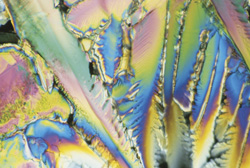Groundbreaking nanotech for limitless applications
The MOFs consist of organic ligands joined together by metal ions. The resulting molecular framework can be loaded with other binding molecules to produce physical and chemical transformations. In addition to their superior adsorption capacities, the MOFs are characterised by their capacity for modular and rational design and construction, making their potential applications nearly limitless. When the ‘Anchoring of metal-organic frameworks, MOFs, to surfaces’ (Surmof) project was initiated in 2005, MOFs were starting to receive much attention for potential application in hydrogen storage for electric automobiles. This particular application was suitable for MOF materials in powder form. However, the foresight of the EU-funded researchers led them to propose development of a methodology for deposition of MOFs on solid substrates, a technology non-existent at the time of the project proposal and one that could open the door to numerous advanced applications. By project end, the Surmof research team successfully developed a layer-by-layer method known as liquid phase epitaxy that is now the basis for MOF desorption on solid substrates. Nearly all work published on MOF deposition on substrates references work done by partners within the Surmof project. surmof have provided state-of-the-art methodology that has become the recognised world standard for MOF deposition on solid substrates. Further research and commercialisation of concepts based on the outcomes could lead to significant advances in sensor technology and electronics, positioning the EU for a leading role in a very large sector, creating jobs and generating income for EU citizens.







